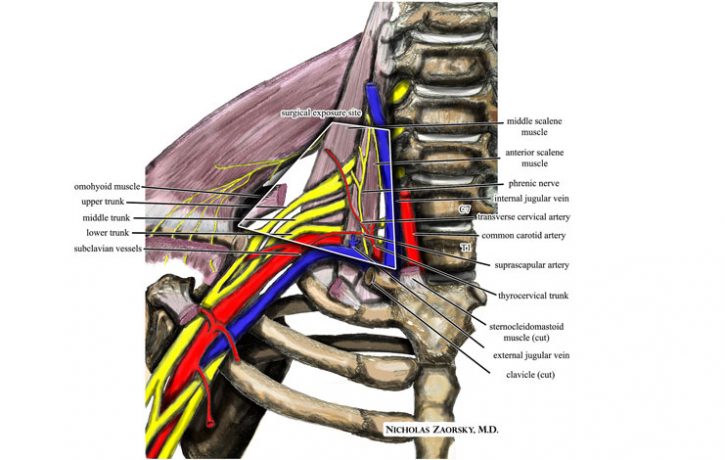What You Need to Know About Thoracic Outlet Syndrome

Rarely in the clinic does neurological pain occur as the main symptom to the client, but there are only really a handful of areas most common when they do. Thoracic outlet syndrome is one of those neurological diagnoses to come up as strictly a nerve-related injury and not just an extra symptom. Others such as sciatica is actually not an injury itself but rather a type of pain the person is suffering. By saying “I have sciatica,” you are saying a similar sentence when you say “my wrist hurts.” By comparison, your sentence should be “I have sciatica due to my disc issue in my spine” or “my wrist hurts from all this overuse in badminton.” The first examples explain the pain, the second explains the reason. I hope that makes sense!
So, what should you expect when suffering from “TOS” for short? Well, the thoracic outlet is a route under your collarbone that supplies your nerves and blood vessels to your arm among other areas close by. The area in which they go can become compressed by a small number of factors, but when it happens you can expect a referred pain most likely down the arm right to the fingertips. This can be numbness, constant ache, pins and needles quite commonly, or burning. There are 3 types of TOS but on this topic, we focus on the more regular occurrence of neurological pain.
TOS affects women 3-4 times as much as men, which can be related to the breast tissue pulling on the collarbone causing more compression on the thoracic outlet. Touching on that slightly, posture can be a big factor in the occurrence; if you find yourself slumped at work often or possibly don’t exercise shoulders to build strength, this could put you in the line of fire. Clavicle or rib fractures can also lead to TOS due to an abnormality in the skeletal structure. Sometimes, however, your risks can’t be avoided, a small percentage of people can have a genetic abnormality in their form. Cervical ribs (roughly 0.5% of the population) can cause complications for TOS to occur for example.
If you are suffering from TOS, on a daily basis you will suffer from the referred pain down your arm and often in the neck. It can be debilitating at times, but for the most part, it’s a constant discomfort no matter your position. You almost feel there’s no way you can sit or lay yourself to alleviate the pain. I’ve known the condition to last months, but as always the quicker you can get it looked into, the better.
Treatment conservatively mainly involves strength work in the upper back to lift the clavicle from its resting spot, decompressing the thoracic outlet. You could also stretch the muscles below the collarbone to prevent them pulling it down. Massage can, of course, be beneficial, but needs to be very cautious and specific into the scalene muscles (just above the collarbone into that hard portion to the side of your windpipe). These muscles surround the brachial plexus, the fibers that head into the thoracic outlet. If these are tight it can be the source of the issue. Remembering where they are, however, you can imagine it’s not the nicest area for manual therapy. As a therapist you gauge on your client’s response; always be clear to express your discomfort.
If conservative treatment fails after a period of time, injections have been used in the past as a surgical intervention but would always be the last resort.
If you have any questions please contact Kieran Mote at The Body Matters.
- What’s Your Weakness? - 7th February 2019
- Taping and Strapping Vlog – How does Kinesiology tape work? - 26th October 2018
- Are Regular Treatments Worth It? - 14th September 2018
